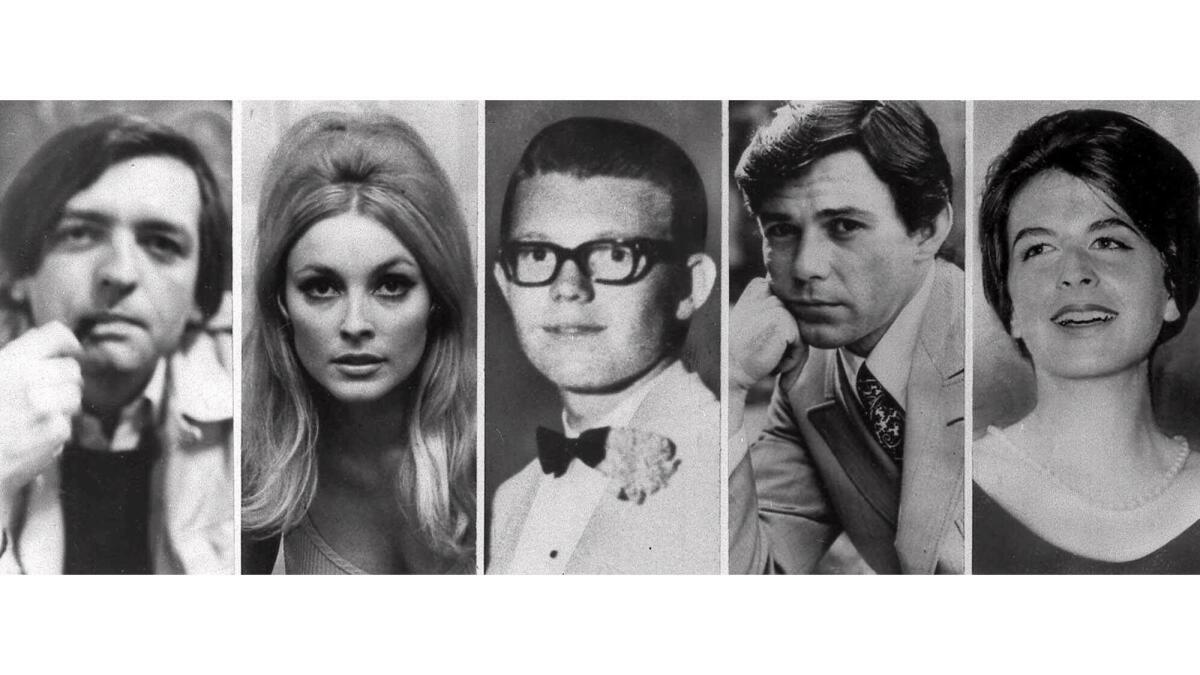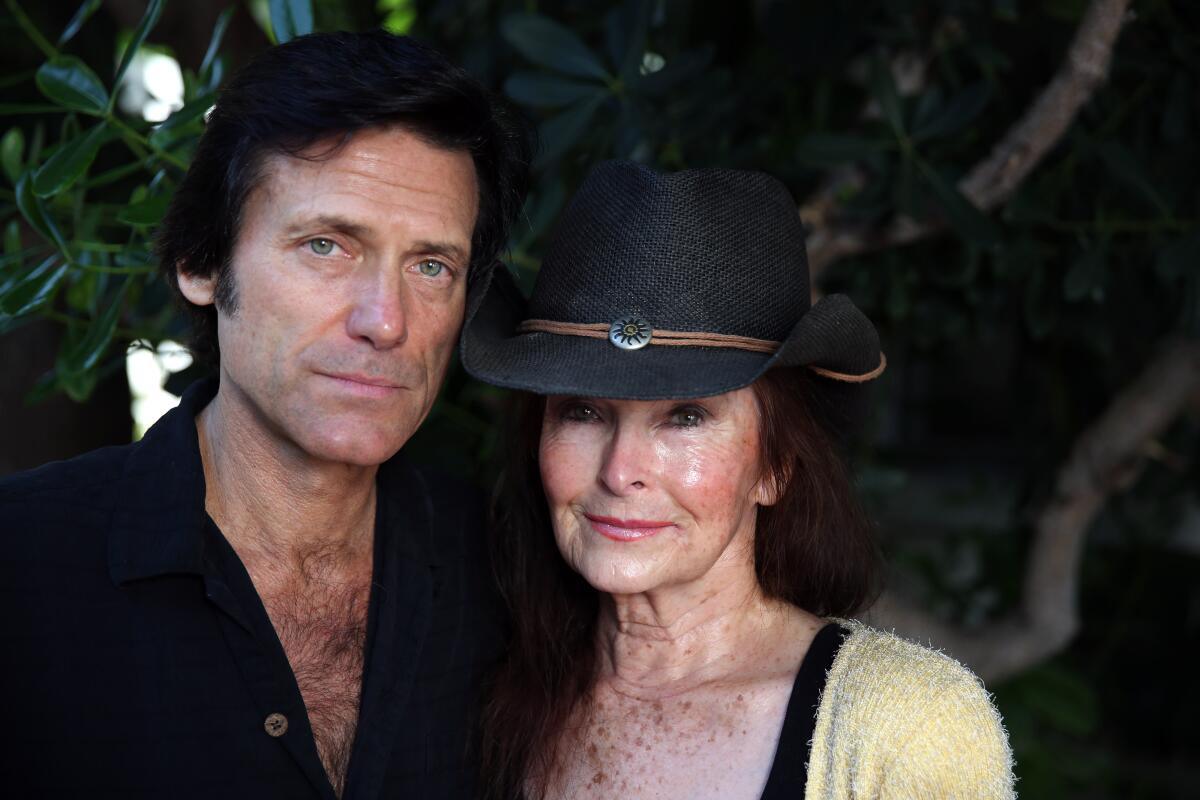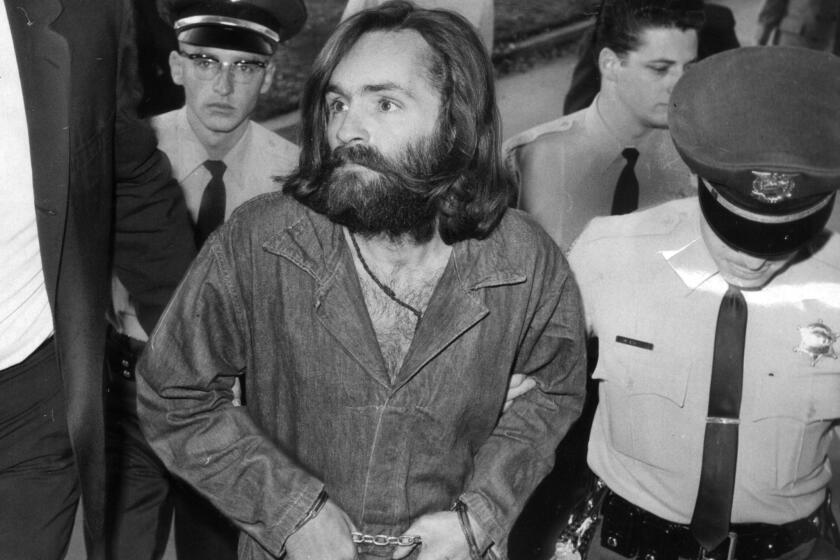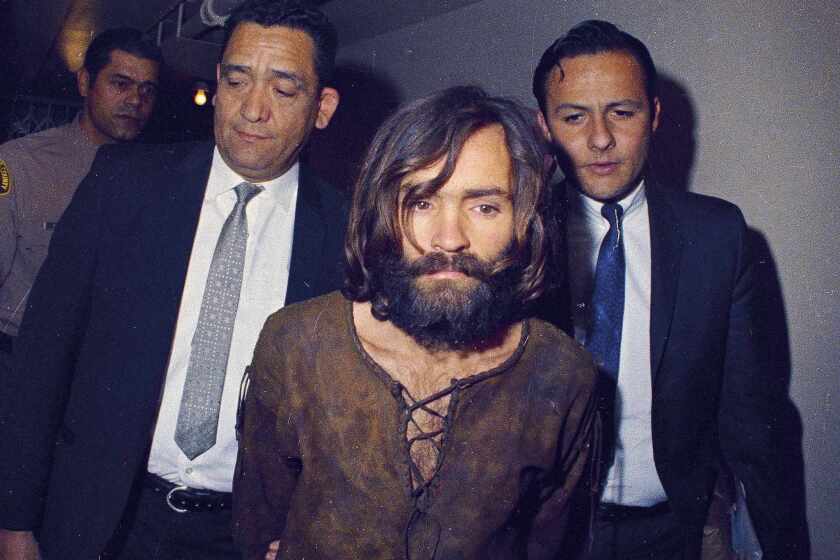Families of Charles Manson victims still fighting to tell their loved ones’ stories, 50 years later

- Share via
On Aug. 9, 1969, Jay Sebring fought for his life as he was fatally attacked on Cielo Drive.
His nephew wants you to know that his uncle did not remain idle as his assailants tortured him that summer midnight in Los Angeles. Nor did the others who were stabbed and shot to death at the hands of a group of coldblooded killers. Ultimately, seven people lost their lives during a two-night rampage, and two others were killed in the weeks before and after.
In the 50 years since the Manson attacks, the story of the tragedies has been dominated by details of the killers, cemented as a kind of mythological lore. The stories of those whose lives were cut short are ones less told.
But half a century later, the families of those killed are still fighting for their loved ones — to ensure they are not forgotten and to keep the people who took their lives behind bars.
Seated inside the Beverly Hills hair salon of Jay Sebring’s protege, Cami Sebring remembers her wedding day vividly. After a two-week whirlwind romance in 1960, she and Jay Sebring married in Las Vegas.
Crooner Vic Damone was the best man and the members of the Rat Pack were among the guests. Sammy Davis Jr. doled out stuffed animals to partygoers, a giant ram going to his stylist’s new wife.
Followers of Charles Manson were tied to the deaths of nine people in the summer of 1969.
Cami Sebring was young when she married — just 17 — and separated three years later. But she and Jay remained friends.
“Even though we weren’t together, he was part of me. He was in my heart,” she said. “We were spiritually connected.”
She hasn’t been able to talk about her former husband’s killing, too upset by the life and goals that were cut short by what she calls “demonic, manic, sociopaths.”
Jay Sebring had plans to help style men beyond Steve McQueen, Tony Bennett and Bruce Lee and his client roster of Hollywood’s up-and-coming stars. The 35-year-old had a creative flair and a knack for identifying features that should be accentuated, which helped him elevate men’s style at a time when fashion and appearance were deemed women’s priorities.
“He created an industry that never existed,” said Jay Sebring’s nephew Anthony DiMaria. “That industry is a nearly $20-billion industry today.”

DiMaria was only 3 when his uncle died. He remembers witnessing pain in his mother’s eyes when she explained to him the concept of heaven, and that her brother — his uncle — would not come back. The knowledge that someone who had meant so much to his mother was no longer alive was like a vortex that consumed him, he said. He wanted to know everything about the man he remembered as “the cool guy.”
As DiMaria got older, he read anything and everything he could find on Jay Sebring’s life, including what he says were disturbingly false characterizations about him that were told after the murders.
In the days and months following the deaths of Sebring and the others, police searched for a motive that aligned the lives of the victims and the killers.
“People were desperate to get the facts,” DiMaria said. “But reporting gave way to speculation, speculation gave way to narrative, narrative gave way to titillation and salaciousness. Ultimately, it manifested today as the ‘Charlie Manson industry.’”
Headlines connected the victims to drugs and indiscretion before the facts ultimately revealed that Charles Manson and his accomplices killed a group of innocent people to try to start a race war. But the victims had already been transported to an alternative reality, one that many have held onto as truth.
Read our full coverage of the Manson murders.
Jay Sebring wasn’t a drug dealer, a gambler or a coward. “He’s an unknown hero,” DiMaria said.
For years, DiMaria has been working on a documentary about his uncle to set the record straight and preserve a legacy once tarnished. Early testimonies from the killers and reports that followed implied that the victims ran around frantically in the moments before their lives ended. But DiMaria’s research has disproved that idea.
“The point of the documentary is to restore the face to a culturally, historically relevant individual whose identity and legacy has been stolen from him in the sensationalism of his murder.”
Janet Parent witnessed that sensationalism up close. Barely 16 at the time of her brother’s death, she remembers photographers trying to capture images of her family in the midst of their grief. Friends would try to scare her and her brothers when they were home alone following the murders.
“People were just cruel,” she said.
Charles Manson and his “family” committed heinous crimes across Los Angeles in 1969. Here is a timeline of what led up to the murders and the aftermath.
Steven Parent, the youngest victim at 18, was killed in his car while leaving the Cielo Drive property of Sharon Tate and Roman Polanski. He had stopped by to sell a clock radio to the groundskeeper, as Sebring, 8 ½-month-pregnant Tate, Abigail Folger — heir to the Folgers coffee fortune — and her boyfriend, Voytek Frykowski, remained inside the large residence.
Parent, a recent high school graduate, belonged to a tightknit family. His absence left a hole that couldn’t be replaced.
Janet Parent departed California first. She moved to Texas three years after her brother’s death. Her family followed soon after. In 1984, her mother died at 59.
“My mom died very young of cancer — she died of a broken heart. She never was the same,” Parent said. “I always heard you never want to bury a child.”
In the time since she moved to Texas, she’s come back to California only once — for a parole hearing of one of the convicted killers, Susan Atkins, who died in prison in 2009.
The parole hearings have been a constant for decades. In 1972, a California Supreme Court ruling found the state’s death penalty law at the time unconstitutional. The sentences of the convicted killers were changed to life in prison with the possibility of parole.
At the time, the victims’ families were assured that the change was just a technicality. But in the years since, they’ve come to learn that release is not out of the realm of possibility. In January, Gov. Gavin Newsom denied the parole board’s request to release Leslie Van Houten.
Today, Van Houten, 69; Patricia Krenwinkel, 71; Bobby Beausoleil, 71; Charles “Tex” Watson, 73; and Bruce Davis, 76; remain in prison. Davis was recently cleared for parole. His pending release could still be blocked by Newsom. Manson died in 2017.
The victims’ families have sat through dozens of parole hearings, where the details of the murders are regurgitated.
Kay Hinman Martley and Debra Tate have a website dedicated to the status of the so-called Manson family behind bars. Tate is the sister of Sharon, a 26-year-old actress who was the most recognizable of the victims. Martley is the cousin of Gary Hinman, the first Manson victim, killed weeks before the August rampage and the one she believes most have forgotten.
Hinman, 34, was a musician who would regale Martley’s family on the grand piano. Before he was robbed and killed, he had offered some of those connected to Manson a place to stay.
“Gary was a kind, sweet person. He was Buddhist. He begged for his life over and over again to no avail,” Martley said. “He was tortured for three days — there’s no doubt about it. He was left to rot.”
For years, Martley has dedicated time to ensuring that the public remember how her cousin died and that the people who committed those crimes years ago are still the same people fighting for release. “They’re still the same personalities they were 50 years ago.”
She and her family have tried not to fixate on Hinman’s death. This year, she will remember with a quiet prayer.
“I will pray for peace for all the victims’ families because that’s who is hurt by all of this.”
Tate did not respond to interview requests for this story. In 2017, she told The Times that when she and her mother learned that one of Sharon’s killers was up for parole, the pair stood on street corners and in front of eateries, telling the story of the murder to strangers, and gathered thousands of signatures against the inmate’s release.
Doris Gwendolyn Tate, Sharon and Debra’s mother, went on to advocate for legislation that would assist crime victims. And Debra Tate often takes phone calls from violent-crime victims in need of help.
“It makes me feel as it did my mother, that there is some kind of good that can come out of all this ugliness,” Debra Tate said. “By helping someone else recognize and be able to process their pain, you’re actually helping yourself.”
Over time, the murders have been parodied and glorified in pop culture. When DiMaria learned that Quentin Tarantino was making a movie that would portray his uncle, he contacted the director and producer Shannon McIntosh to advise against exploitation. He was grateful that the film did not. “They showed a tremendous amount of consideration and care,” he said.
The image of Sharon Tate, as depicted by actress Margot Robbie, smiles at onlookers from movie posters for Tarantino’s “Once Upon a Time ... In Hollywood” throughout the city where she died.
There’s a poster near the corner of Franklin and Hillhurst, where Rosemary and Leno LaBianca, owners of a chain of Los Angeles grocery stores, reportedly stopped to pick up a newspaper before heading to their home on Waverly Drive. There, they would meet the same torture that Tate, Sebring, Parent, Folger and Frykowski had faced hours before. The same fate that Hinman faced weeks earlier, and what Donald “Shorty” Shea — a horse wrangler at Spahn Ranch — would meet weeks later.
As the 50th year after the killings approached and films, TV specials, articles and podcasts retold the history once again, Cami Sebring asked a question that echoed a sentiment held by family of other victims and anyone who has lost a person they have loved.
“How could there be an anniversary for this horrendous moment in time?”
More to Read
Sign up for Essential California
The most important California stories and recommendations in your inbox every morning.
You may occasionally receive promotional content from the Los Angeles Times.













